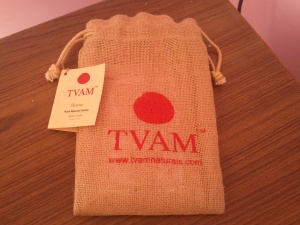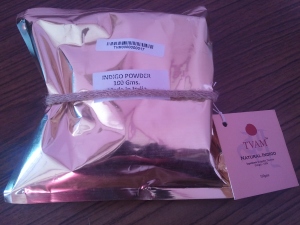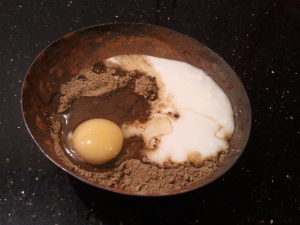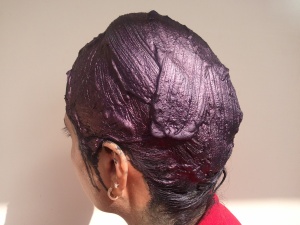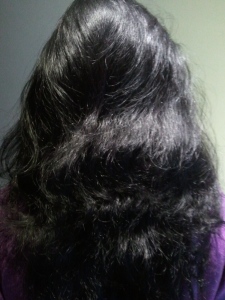FAB WOMAN: Crisy Vasan
Explorer, fashionista, a firm believer of the fact that natural products have the power to touch your soul. Today we introduce you to Crisy Vasan, Founder of beauty brand “TVAM”. You must have spotted her in The Economics Times, on Fashion TV Online, Asianet, Malayala Manorama’s Mazhavil channel among the many places that she’s been featured. Read on to find out how she build one of India’s most luxurious Ayurvedic Beauty brands.
Crisy completed her MS in Computer Science and Engineering and then lived and worked in the US for years, but she found her true calling in India. The drive to achieve something is what made her start her own venture “TVAM” in 2007 for the purpose of promoting a natural lifestyle and to provide a comprehensive range of high quality natural beauty products. TVAM means “YOU” in Sanskrit and was created for consumers to enjoy nature’s purest skincare products. It is a cosmetics company which combines ancient beauty traditions with modern advances in skincare. Crisy’s belief and conviction was that nature has a lot of healthy and beneficial ingredients that ayurvedic science had formulated centuries ago, Crisy strives to raise awareness about these beneficial ingredients to India and the world through her brand TVAM, whose every product is formulated with unique techniques and rich ingredients enrich your skin. She realised the power of Ayurveda after she herself benefited from an ayurvedic treatment. Thereafter started her quest to come up with products and developed an entire range of Hair, Face and Body care products using natural ingredients and with approved ayurvedic formulations – but in contemporary “textures” that are all new to the Indian market. TVAM has created a successful online presence with now being sold on www.tvamnaturals.com also available on FabBag.com. Subsequently,Crisy also expanded her business into spas, resorts and skin clinics and is now poised to take TVAM into selected global markets.
Besides being an entrepreneur, Crisy is also a keen follower of fashion and has just launched another online label called ‘Tamara’ which promotes the fashion designs of up-coming designers in India. This label offers ethnic and contemporary fashion-wear for casual, semi-casual and formal wear.
The FAB BAG crew had a chat with her and it was inspiring to know insights of her life. Here are snippets from our chat which we’re sure you’ll enjoy reading,
FAB BAG : If not Crisy, who would you be?
Crisy : I don’t think I ever wanted to be anybody else. I’ve had a fairly exciting and enriching journey. The experiences along the way have been diverse. I have been able to study, travel, work and start up a business along with raising a family. This has taken place all over world which has given me wide exposure to different aspects of life. I feel I’ve been very fortunate and wouldn’t change anything. Of course, there is a lot left to learn and achieve, but I’d prefer to do that as myself.
FAB BAG : One over hyped advice that you’d never give anyone?
Crisy : When you start a business people say it is tough now and will all become alright in 5 years.
FAB BAG : If money could buy happiness, what would you spend it on?
Crisy: I would spend it on a magic machine that could make me slim instantly so that any designer dress would look good on me.
FAB BAG : What is your idea of a perfect getaway?
Crisy : On an island, with lots of shopping, followed by a romantic cruise with my husband.
FAB BAG : One beauty tip that you can always fall back on?
Crisy: Sleeping well for at least 8 hours a day is a must for me. I don’t wear any makeup other than an eyeliner and lipstick when I go out. Take care of your skin the natural way by cleaning, toning and moisturizing with natural products. A lot of the commercially available products can have detrimental effects on your skin, so be very careful about what you use and how much you use.
FAB BAG : If you had to go back in time, what would you change?
Crisy: I don’t wish to change anything about myself, but would try to make all the food organic and natural and ensure everything is made the natural way. Even skin and hair care products would be all natural. I believe the method of production and distribution of food and health care products have led to a lot of chemical preservatives that causes a lot of health and skin problems. If I could go back in time, and if I had the power, I would ensure the ingredients of food and health care products were fresh and organic rather than preserved.
FAB BAG : Is there any particular quote that you live by?
Crisy : Never, never, never give up – Winston Churchill and Do not stop trying. Do it until you reach the top.
Parting shot : Crisy’s story is a voice for those who somewhere are afraid to take that step toward to fulfil their dream. For those of you who are reading this story we have a message for you, “If you have a dream, don’t just sit there, gather courage to believe that you can succeed and leave no stone unturned to make it a reality. Just dare to be yourself.“
The *FAB* Women initiative by FabBag.com celebrates the occasion of Women’s Day all through the month of March with an aim to inspire women across the country by sharing stories of ordinary women with extraordinary lives. If you liked reading Pooja’s story, please leave a comment below and share this article. It’s now your turn to spread the inspiration.







